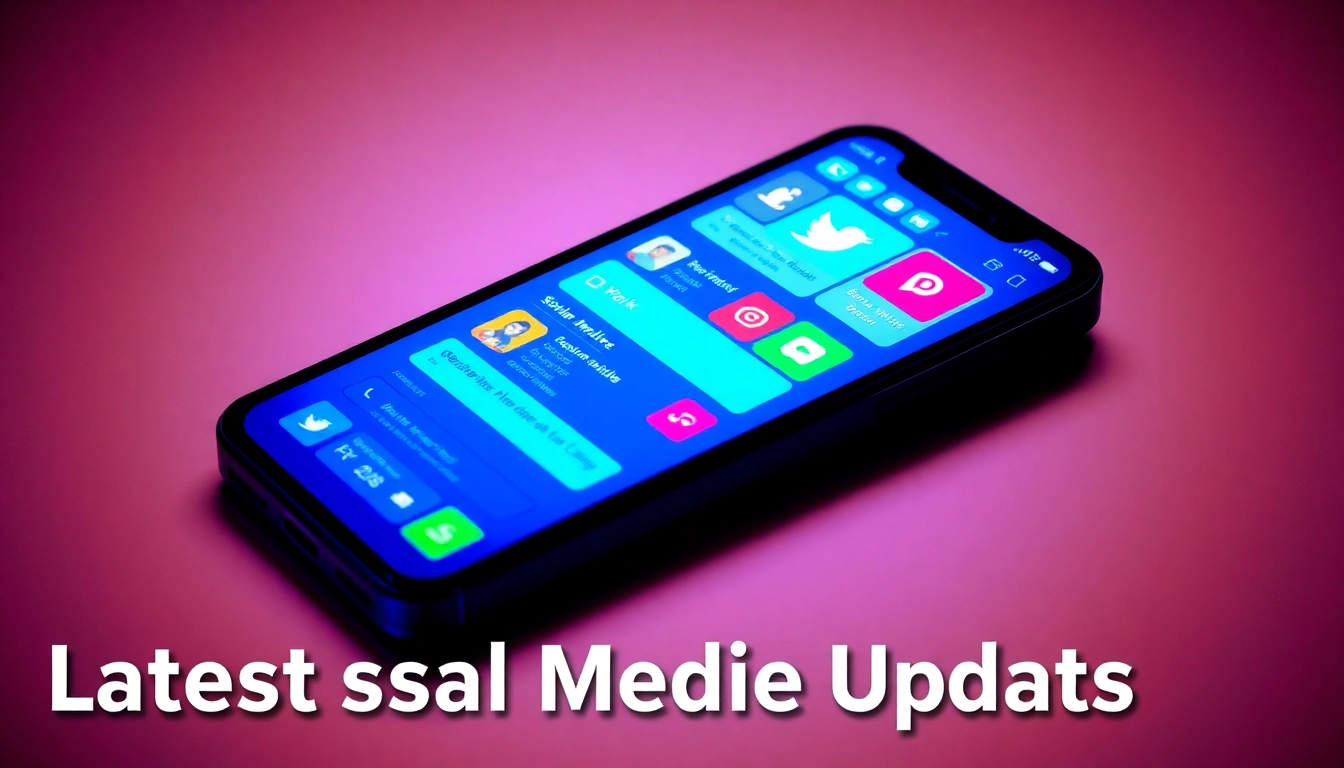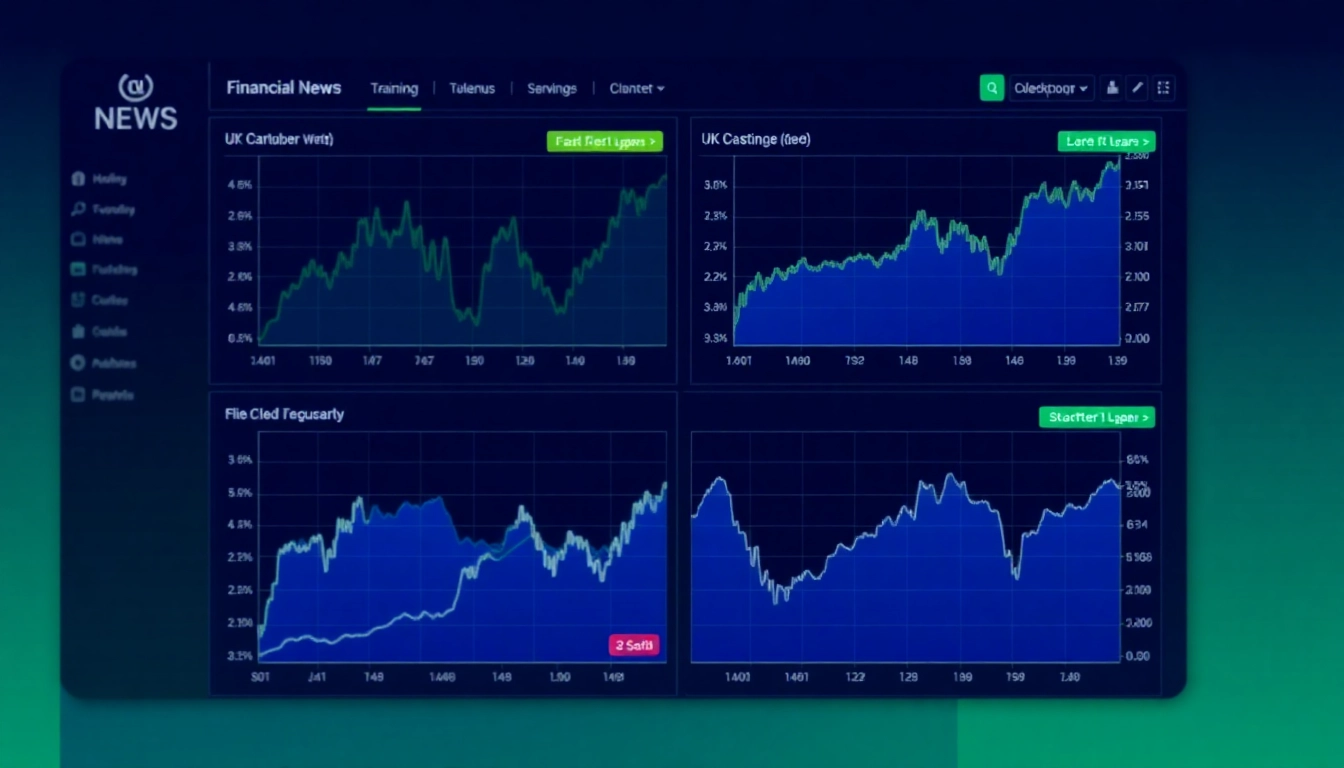
Understanding the Importance of Staying Updated on Social Media Trends
In the rapidly evolving landscape of digital marketing, staying informed about the Latest Social Media Updates is crucial for businesses aiming to maintain a competitive edge. Social media platforms are continually transforming through algorithm shifts, new feature rollouts, and changing user behaviors. These updates influence how content is distributed, seen, and engaged with, directly impacting marketing strategies’ effectiveness. Ignoring these shifts can lead to missed opportunities, stagnant engagement, and diminished return on investment. Hence, marketers need to develop robust processes to track, analyze, and incorporate the latest platform changes into their campaigns.
Why Social Media Updates Drive Business Success
Social media updates are not merely technical adjustments; they are strategic inflection points that can redefine marketing effectiveness. For example, algorithm changes can alter content visibility, making some posts more prominent while relegating others. Embracing new features, such as Instagram Reels or LinkedIn Stories, allows brands to diversify their content mix and reach different audience segments effectively. Additionally, timely adoption of new tools helps businesses stay relevant and showcases their innovativeness — key factors that resonate with today’s digitally savvy consumers. Companies that adapt swiftly to these updates often experience boosts in engagement, lead generation, and brand loyalty, translating directly into increased revenue.
For instance, a recent TikTok algorithm adjustment prioritized engaging, authentic content, prompting marketers to pivot towards more genuine storytelling rather than overly polished ads. This shift resulted in higher engagement rates and better conversion metrics for brands that adapted quickly. Thus, continuous learning and agility in response to social media updates are essential for long-term success.
Key Trends Shaping Social Media in 2024
As we navigate through 2024, several key trends are defining the social media landscape:
- Video Content Dominance: Short-form videos continue to surge, with platforms like TikTok, Instagram Reels, and YouTube Shorts leading the charge. Video content’s engagement levels outperform static images, making it a focal point for marketers seeking higher reach.
- AI and Personalization: Artificial intelligence tools are enabling hyper-personalized content delivery, targeted advertising, and chatbots that offer seamless customer support — enhancing user experience and brand loyalty.
- Social Commerce Expansion: Shoppable features are integrated into platforms, turning social channels into direct sales avenues. Businesses leverage these tools to streamline purchasing journeys, reducing friction and increasing conversions.
- Authenticity and Transparency: Consumers favor brands that showcase genuine stories and transparent practices. User-generated content and behind-the-scenes glimpses resonate more strongly than curated perfection.
- Sustainability and Social Responsibility: Brands communicating their sustainability efforts and social commitments can engage audiences that prioritize ethics, fostering trust and community engagement.
Common Challenges in Tracking Social Media Changes
Despite the clear benefits, marketers face several challenges when staying ahead of social media updates:
- Information Overload: The sheer volume of updates across multiple platforms makes it difficult to discern which changes are impactful and worth action.
- Rapid Pace of Change: New features and algorithm tweaks are rolled out frequently, often with little warning, requiring agile adaptation strategies.
- Lack of Standardized Data: Variations in data analytics tools and metrics can hinder cross-platform comparison and comprehensive performance assessment.
- Resource Constraints: Smaller teams may lack the bandwidth or expertise to monitor, analyze, and implement updates effectively.
- Keeping Up with Emerging Platforms: The rise of new social networks demands continuous learning and strategy adjustment, stretching resources thin.
Overcoming these challenges requires a structured approach, such as dedicating regular time for trend analysis, investing in up-to-date tools, and fostering a culture of agility within marketing teams.
Analyzing Recent Social Media Updates for Effective Strategies
Major Platform Algorithm Changes and Their Impact
Algorithms dictate what content users see, making their understanding critical for success. Recent modifications, such as Instagram emphasizing Reels and TikTok’s focus on engagement metrics, necessitate a shift towards more dynamic and interactive content. Marketers need to analyze how these adjustments influence organic reach and paid promotions. For instance, platforms that prioritize video engagement encourage brands to produce shorter, more captivating videos to gain visibility.
Emerging Features Every Marketer Should Know
New tools like Instagram’s Shop tab, LinkedIn’s newsletter features, and Twitter’s audio spaces open avenues for innovative engagement. Implementing these features effectively involves testing, data analysis, and iteration to identify what resonates most with your audience. Early adoption can position your brand as a pioneer, gaining an advantage over competitors.
Evaluating Content Performance with Latest Updates
With platform enhancements, traditional KPIs like impressions and clicks need to be supplemented with metrics like engagement rate, video completion rate, and audience sentiment. Utilizing upgraded analytics dashboards and third-party tools helps in decoding these data points, enabling precise strategy refinement. Regular performance reviews ensure your content remains aligned with current platform algorithms and user preferences.
Implementing the Latest Social Media Updates into Your Marketing Plan
Best Practices for Adapting to New Platform Features
Successful adaptation involves proactive experimentation, continuous learning, and iterative optimization. For example, if a platform introduces new interactive stickers or shopping options, brands should integrate them into campaigns promptly, track engagement, and adjust messaging based on results. Developing flexible content calendars and fostering a culture of agility ensures your team can capitalize quickly on new features.
Tools to Stay Ahead of Social Media Trends
Several analytics and listening tools, such as Hootsuite Insights, Sprout Social, and Brandwatch, play a vital role in tracking platform updates and audience behavior. AI-powered trend prediction tools can forecast upcoming features or shifts, allowing preemptive strategy adjustments. Subscribing to industry newsletters, participating in webinars, and engaging in online communities also promote continuous learning.
Case Studies of Successful Strategy Adjustments
Consider a retail brand that quickly adopted TikTok’s new shopping features, creating engaging product videos that seamlessly integrated direct purchase options. This swift response led to a 30% increase in online sales in just three months. Similarly, a B2B company leveraged LinkedIn’s newsletter feature to nurture leads, resulting in higher conversion rates. These examples highlight the importance of timely action and strategic integration of new features.
Measuring the Impact of Social Media Updates on Engagement
Setting Metrics for Success Post-Update
Defining clear KPIs aligned with strategic goals is essential. These may include reach, engagement rate, conversion rate, follower growth, or sales attributed to specific campaigns. Post-update, these metrics should be reassessed to ensure they reflect new platform capabilities. Combining quantitative data with qualitative insights, such as audience feedback, provides a comprehensive view of impact.
Analyzing Audience Response and Engagement Metrics
Engagement metrics like shares, comments, and time spent on content reveal how well your audience interacts with recent updates. Monitoring sentiment analysis helps understand audience perception and adapt messaging accordingly. Segmentation allows for tailored insights across different demographic groups, enabling more precise content adjustments.
Continuous Optimization Based on Recent Developments
Data-driven decision-making is vital for ongoing success. Regularly reviewing performance metrics, conducting A/B testing, and staying receptive to audience feedback help refine strategies in real-time. Employing automation tools for reporting and insights accelerates response times, ensuring your brand remains agile amid ongoing social media evolution.
Future Outlook: Predicting Next Trends in Social Media for 2024 and Beyond
Anticipated Platform Evolutions and Features
Platforms are expected to deepen their integration of AI technologies, offering more personalized content feeds, intelligent chatbots, and automated content moderation. Augmented reality (AR) features for virtual try-ons and product demos will likely become commonplace. Voice-based content and audio-only formats may also gain prominence as users seek more intuitive, hands-free interactions.
Preparing Your Strategy for Upcoming Changes
Forward-thinking brands invest in continuous learning, platform-specific training, and flexible content creation workflows. Building adaptable content templates and investing in new technologies now positions your business to capitalize on emerging features and user behaviors before they become mainstream.
Leveraging Data and Analytics for Future Success
Advanced analytics, machine learning, and predictive modeling will increasingly inform decision-making. By harnessing comprehensive data from multiple sources, brands can anticipate shifts, optimize allocation of resources, and craft more resonant messages. Staying informed about evolving AI and data tools will be key to sustaining competitive advantage.




